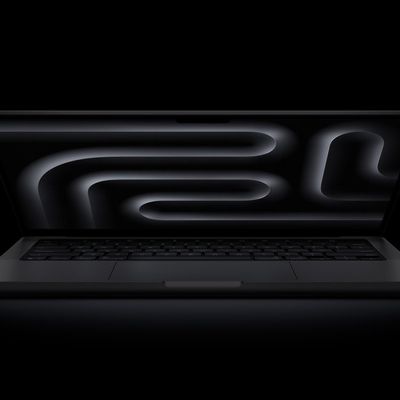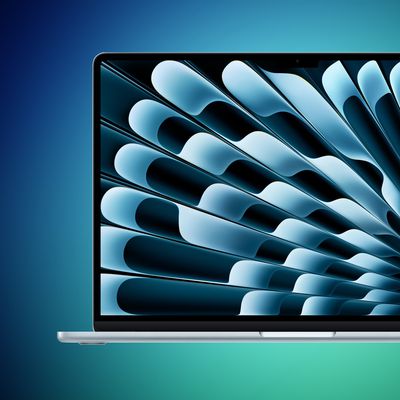OS X 10.10.3 Now Supports Dell's Dual-Cable 5K Monitor on Retina iMac and Mac Pro
With the release of OS X 10.10.3 last Wednesday, Apple has expanded support for high-resolution 4K and even 5K external displays (via 9to5Mac). Most notably, OS X 10.10.3 enables the Retina 5K iMac and 2013 Mac Pro to drive Dell's UP2715K 27-inch 5K display released late last year. The display requires more bandwidth than is currently supported over a current single DisplayPort/Thunderbolt cable, so it uses a dual-cable solution taking up two ports on the user's machine.

This bandwidth issue for the current DisplayPort standard has been seen as a major roadblock keeping Apple from releasing a standalone 5K Thunderbolt Display. With the Retina iMac, Apple has been able to build custom internal components to drive the massive display, but for external displays, a dual-cable solution such as that used by Dell has been considered by many to be "un-Apple like."
As a result, Apple has been widely expected to wait until the release of Intel's Skylake platform with DisplayPort 1.3 support later this year before releasing an external 5K Thunderbolt Display that will function over a single cable. Whether the inclusion of support for Dell's dual-cable solution in OS X 10.10.3 is a sign Apple may be willing to adopt that arrangement for its own display and perhaps release it earlier is, however, unclear.
Beyond 5K displays, OS X 10.10.3 has also expanded support for 4K displays to include "most single-stream 4K (3840x2160) displays" at 60 Hz, expanding beyond the previous support of only Multi-Stream Transport displays introduced in late updates to Mavericks. The new 4K display support will function with most of the Mac line, from the 27-inch iMac to the brand-new Retina MacBook. However, only the Mac Pro and iMac will support full 4096x2160 resolution at 60Hz.
With OS X Yosemite v10.10.3, most single-stream 4K (3840x2160) displays are supported at 60Hz operation on the following Mac computers:
- MacBook Pro (Retina, 13-inch, Early 2015)
- MacBook Pro (Retina, 15-inch, Mid 2014)
- Mac Pro (Late 2013)
- iMac (27-inch, Late 2013 and later)
- Mac mini (Late 2014)
- MacBook Air (Early 2015)
- MacBook (Retina, 12-inch, Early 2015)
As for the new 12-inch MacBook, the laptop will be able to support displays and rates of 3840x2160 at a 30 Hz refresh rate and 4096x2160 at a 24 Hz refresh rate. MacBook users wanting to use such a display will, of course, need to use Apple's USB-C Digital AV Multiport Adapter to do so.
Popular Stories
Apple plans to cut production of the iPhone Air amid underwhelming sales performance, Japan's Mizuho Securities believes (via The Elec).
The Japanese investment banking and securities firm claims that the iPhone 17 Pro and iPhone 17 Pro Max are seeing higher sales than their predecessors during the same period last year, while the standard iPhone 17 is a major success, performing...
iOS 26 was released last month, but the software train never stops, and iOS 26.1 beta testing is already underway. So far, iOS 26.1 makes both Apple Intelligence and Live Translation on compatible AirPods available in additional languages, and it includes some other minor changes across the Apple Music, Calendar, Photos, Clock, and Safari apps.
More features and changes will follow in future ...
Apple's software engineers continue to internally test iOS 26.0.2, according to MacRumors logs, which have been a reliable indicator of upcoming iOS versions.
iOS 26.0.2 will be a minor update that addresses bugs and/or security vulnerabilities, but we do not know any specific details yet.
The update will likely be released by the end of next week.
Last month, Apple released iOS 26.0.1,...
Apple on Wednesday updated the 14-inch MacBook Pro, iPad Pro, and Vision Pro with its next-generation M5 chip, but previous rumors have indicated that the company still plans to announce at least a few additional products before the end of the year.
The following Apple products have at one point been rumored to be updated in 2025, although it is unclear if the timeframe for any of them has...
iOS 26.4 is expected to introduce a revamped version of Siri powered by Apple Intelligence, but not everyone is satisfied with how well it works.
In his Power On newsletter today, Bloomberg's Mark Gurman said some of Apple's software engineers have "concerns" about the overhauled Siri's performance. However, he did not provide any specific details about the shortcomings.
iOS 26.4 will...
While the new iPad Pro's headline feature is the M5 chip, the device has some other changes, including N1 and C1X chips, faster storage speeds, and more.
With the M5 chip, the new iPad Pro has up to a 20% faster CPU and up to a 40% faster GPU compared to the previous model with the M4 chip, according to Geekbench 6 results. Keep in mind that 256GB and 512GB configurations have a 9-core CPU,...
Apple on Wednesday updated the 14-inch MacBook Pro base model with an M5 chip, and there are two key storage-related upgrades beyond that chip bump.
First, Apple says the new 14-inch MacBook Pro offers up to 2× faster SSD performance than the equivalent previous-generation model, so read and write speeds should get a significant boost. Apple says it is using "the latest storage technology," ...
Apple plans to launch MacBook Air models equipped with the new M5 chip in spring 2026, according to Bloomberg's Mark Gurman. Apple is also working on M5 Pro and M5 Max MacBook Pro models that will come early in the year.
Neither the MacBook Pro models nor the MacBook Air models are expected to get design changes, with Apple focusing on simple chip upgrades. In the case of the MacBook Pro, a m...
The first alleged benchmark result for the M5 chip in the new 14-inch MacBook Pro has surfaced, allowing for some performance comparisons.
Based on a single unconfirmed result uploaded to the Geekbench 6 database today, the M5 chip has pulled off an impressive feat. Specifically, the chip achieved a score of 4,263 for single-core CPU performance, which is the highest single-core score that...
























